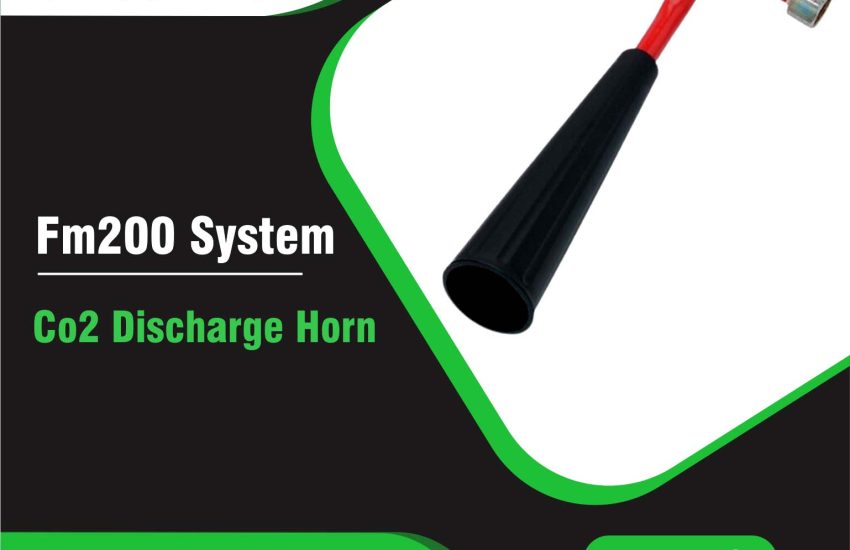CO2 Discharge Horn plays a vital role in safety systems by signaling the discharge of CO2 gas during fire suppression or gas control operations. It emits a loud, attention-grabbing sound, prompting personnel to evacuate or take action. This article will explore the specifications, features, benefits, and applications of CO2 Discharge Horns.
What is a CO2 Discharge Horn?
A CO2 Discharge Horn alerts personnel when CO2 gas is released during fire suppression or safety operations. It is a key component in industrial, commercial, and emergency settings. The horn produces a loud, distinct sound to ensure that everyone hears the warning and can evacuate quickly and safely.
Key Features of CO2 Discharge Horns
- Loud Sound: CO2 discharge horns produce a sound level of 120 dB to 140 dB. This ensures that people hear the alarm over long distances, even in noisy environments.
- Durable Construction: These horns use corrosion-resistant materials, such as stainless steel and durable alloys, to withstand harsh industrial environments and remain reliable for years.
- Weather Resistance: Built to handle extreme weather conditions, CO2 discharge horns function well in high humidity, fluctuating temperatures, and exposure to harsh elements.
- Electric or Pneumatic Operation: CO2 discharge horns can operate either electrically or pneumatically. The choice of power depends on the specific system configuration.
- Easy Integration: These horns integrate seamlessly into fire suppression systems, gas control setups, and emergency warning systems. Their versatile design allows them to fit various safety systems.
Specifications of CO2 Discharge Horns
- Sound Output: Typically, CO2 discharge horns produce between 120 dB and 140 dB. This sound level ensures the alarm is audible in noisy environments.
- Power Source: They are available in electric, pneumatic, or battery-powered versions, offering flexibility for different needs.
- Material: Manufacturers use high-quality materials, such as stainless steel, aluminum, and corrosion-resistant plastics, to ensure durability.
- Operating Temperature Range: Most CO2 discharge horns operate effectively within a temperature range from -40°F to 150°F (-40°C to 65°C).
- Dimensions: These horns come in sizes ranging from compact models for smaller areas to larger units designed for high-risk environments.
- Mounting Options: Users can mount CO2 discharge horns on walls, ceilings, or pipes, depending on their specific setup.
- Signal Frequency: The horns produce a frequency between 1,000 Hz and 3,000 Hz, ensuring the sound is distinctive and immediately recognizable.
Benefits of CO2 Discharge Horns
- Improved Safety: CO2 discharge horns are crucial for safety. They alert workers to evacuate when CO2 is released, reducing the risk of hazardous exposure.
- Regulatory Compliance: Installing CO2 discharge horns helps facilities comply with safety regulations and meet industry standards for fire suppression and gas safety systems.
- Quick Response: The loud and distinct sound ensures rapid evacuation. In environments where every second counts, CO2 discharge horns provide critical warnings.
- Reliability: These horns are built to last. They are durable and reliable, ensuring that they function properly when needed most.
- Cost-Effective: Installing CO2 discharge horns reduces the potential costs associated with gas leaks or fire incidents. The investment ensures better protection for personnel and facilities.
Applications of CO2 Discharge Horns
CO2 discharge horns are used across various industries and environments:
- Industrial Settings: In chemical plants, refineries, and factories, CO2 discharge horns alert workers when CO2 fire suppression systems activate.
- Data Centers: CO2 discharge horns are essential in data centers to warn personnel about CO2 releases during fire suppression activities, protecting sensitive equipment.
- Warehouses: In warehouses storing hazardous materials, CO2 discharge horns help notify workers of fire suppression discharges and potential danger.
- Marine Applications: On ships and oil rigs, CO2 discharge horns alert crew members to fire suppression events and gas leaks.
- Laboratories: CO2 discharge horns in labs handle volatile chemicals, providing immediate alerts in case of emergencies.
Conclusion
A CO2 Discharge Horn is essential in systems that use CO2 for fire suppression or gas control. These horns provide loud, clear signals, helping personnel evacuate swiftly and safely. By meeting regulatory standards and enhancing safety, CO2 discharge horns play a vital role in minimizing risks and protecting people in industrial, commercial, and emergency settings.


